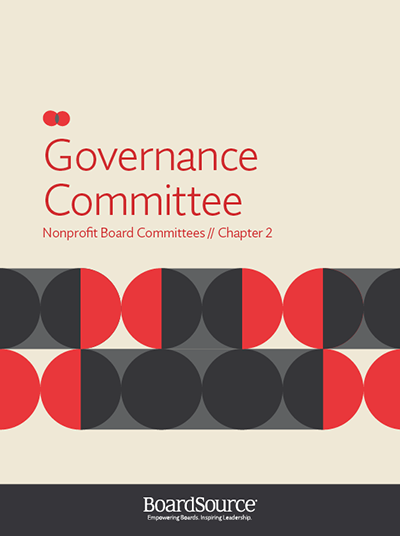Nonprofit Board Committees: Governance Committee
- Product Details
-
- Format
- Editor
- Ellen Hirzy
- Publication Date
- 2018
- Number of Pages
- 53
- Level
- 201
$38.00
Overview
The governance committee’s basic purpose is to help the board — and ultimately the organization — reach its full potential. This simple statement encompasses a complex set of responsibilities that influence a board’s capacity for effective governance. Sometimes called the conscience of the board, this committee adds value by institutionalizing best practices in three areas: strategic recruitment, effective board engagement, and intentional revitalization. Every board should have a governance committee.
Questions answered in this chapter from Nonprofit Board Committees include the following:
- Why is the governance committee one of a board’s most important committees?
- How does the committee work with the full board, the chief executive, and staff?
- How does the committee find the best people for the board?
- How does board diversity affect organizational performance, and what can the governance committee do to address this critical issue?
- How do we keep board members informed, engaged, and knowledgeable about their individual and collective governance responsibilities?
- What are the benefits of board self-assessment, and how do we go about it?
- How does the committee develop future board leadership?
- How can the committee promote a positive and productive board culture?
- What is the committee’s role in monitoring board bylaws, the conflict-of-interest policy, and an organizational code of ethics?
This PDF includes the first chapter of Nonprofit Board Committees — Transforming Committee Structure — as well as the Governance Committee chapter.



